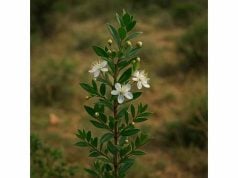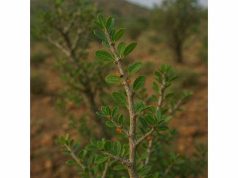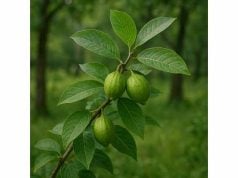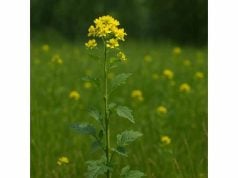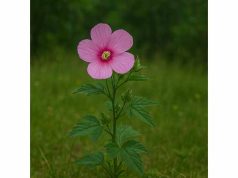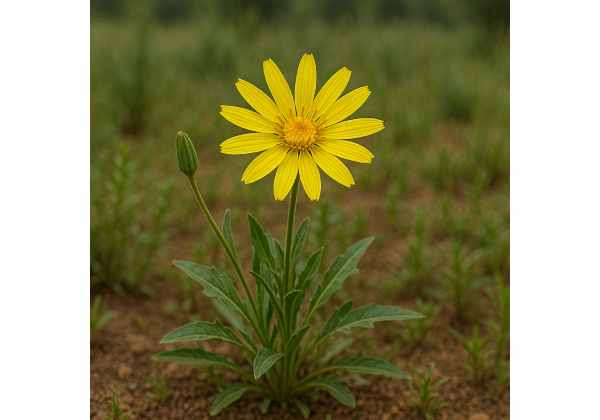
Microseris is a lesser-known yet intriguing herbaceous plant belonging to the Asteraceae family. Traditionally used by indigenous communities for both culinary and medicinal purposes, Microseris is acclaimed for its diverse health benefits. Rich in vitamins, minerals, and an array of bioactive compounds, this herb offers antioxidant, anti-inflammatory, and digestive support. Its edible leaves and roots have been consumed as a salad green and herbal remedy, contributing to overall wellness and vitality. With promising applications in modern natural therapies and functional foods, Microseris continues to attract scientific interest for its unique phytochemistry and therapeutic potential.
Table of Contents
- Botanical Overview and Identification
- Phytochemical Profile and Active Compounds
- Health Benefits and Essential Properties
- Practical Applications and Safety Guidelines
- Scientific Research and Key Findings
- Frequently Asked Questions
Botanical Overview and Identification
Microseris is a genus within the Asteraceae family, a large family that includes many of the world’s flowering plants. Often found in meadows, grasslands, and open woodland areas across North America and parts of South America, Microseris species display a modest yet charming appearance. They are typically low-growing, forming rosettes of finely divided, green leaves that can vary in shape from lanceolate to ovate. The plant’s delicate, daisy-like flowers are usually yellow, white, or pale in color, arranged in small capitula that emerge on slender stalks during the summer months.
Taxonomically, Microseris is characterized by its composite flower heads, typical of the Asteraceae, with involucral bracts that protect the developing florets. The leaves are often slightly aromatic when crushed, hinting at the presence of essential oils and other volatile compounds. Some species within the genus are known for their edible parts; the young leaves and sometimes the roots have been traditionally gathered and consumed by indigenous peoples as a salad green or cooked vegetable. The edible quality is attributed to the plant’s mild flavor and nutrient-rich composition.
Microseris thrives in well-drained soils with moderate fertility and prefers areas with full sun to partial shade. Its ability to colonize disturbed areas makes it a resilient component of native ecosystems. In natural settings, Microseris contributes to soil stabilization and provides a food source for pollinators such as bees and butterflies. Gardeners and wildcraft enthusiasts are increasingly interested in this plant not only for its culinary potential but also for its role in ecological restoration and permaculture systems.
Historically, Microseris has been used in traditional medicine to support digestive health and to serve as a diuretic. Its mild bitter taste and nutritional properties have been appreciated in various folk remedies. The plant’s adaptability and ease of growth have made it a subject of interest among herbalists aiming to reintroduce native edible greens into modern diets. Botanists continue to study Microseris for its genetic diversity and adaptive strategies, which may offer insights into sustainable agricultural practices.
The identification of Microseris in the wild involves noting its low rosette-forming habit, finely divided leaves, and the structure of its flower heads. Detailed botanical keys and field guides emphasize the importance of leaf shape, the presence of milky sap in some species, and the specific arrangement of the florets as distinguishing features. With its subtle beauty and functional value, Microseris stands as a fascinating example of how indigenous flora can offer both ecological benefits and nutritional advantages.
Phytochemical Profile and Active Compounds
The therapeutic and nutritional properties of Microseris are rooted in its complex phytochemical composition. A wide range of bioactive compounds work synergistically to confer health benefits, making this herb a promising candidate for both culinary and medicinal applications. The following sections provide an in-depth look at the key active ingredients found in Microseris:
- Essential Oils and Volatile Compounds:
Microseris contains a variety of essential oils that contribute to its subtle aroma and flavor. These oils, which include terpenoids and phenolic compounds, are known for their antimicrobial and anti-inflammatory properties. The volatile compounds may help inhibit the growth of pathogens and support the body’s natural defense mechanisms. - Flavonoids:
Rich in flavonoids such as quercetin, kaempferol, and luteolin, Microseris exhibits potent antioxidant activity. These polyphenolic compounds are effective at scavenging free radicals, thus protecting cells from oxidative damage. The antioxidant properties of flavonoids are crucial for preventing chronic diseases, including cardiovascular disorders and certain cancers. - Phenolic Acids:
Phenolic acids, including caffeic and chlorogenic acids, are abundant in Microseris. These compounds contribute not only to the plant’s flavor profile but also to its anti-inflammatory and antimicrobial effects. Phenolic acids have been shown to enhance gut health by supporting a balanced microbiome and promoting healthy digestion. - Triterpenoids:
Triterpenoids are bioactive compounds with demonstrated anti-inflammatory and anticancer potential. In Microseris, these compounds may help modulate immune responses and reduce chronic inflammation. Their role in cellular signaling pathways is a focus of ongoing research in natural product pharmacology. - Sterols:
Plant sterols, such as beta-sitosterol, are present in Microseris and have been linked to improved cardiovascular health. These compounds help lower cholesterol absorption in the gut, promoting a healthier lipid profile and reducing the risk of heart disease. - Dietary Fiber:
Although not a phytochemical in the strict sense, the dietary fiber content in Microseris is noteworthy. The fiber contributes to satiety, aids in digestive health, and helps regulate blood sugar levels. A diet rich in fiber supports overall metabolic function and prevents gastrointestinal disorders. - Vitamins and Minerals:
Microseris provides a modest but valuable supply of vitamins such as vitamin C and several B vitamins, along with essential minerals including potassium, magnesium, and calcium. These micronutrients are critical for energy metabolism, bone health, and the maintenance of a robust immune system.
The synergy among these compounds endows Microseris with a multifaceted profile of health-promoting properties. Advanced analytical techniques, such as high-performance liquid chromatography (HPLC) and gas chromatography-mass spectrometry (GC-MS), have been instrumental in characterizing these bioactive constituents. Researchers continue to explore the variability in phytochemical profiles among different species and growing conditions, which is key to standardizing extracts for use in both dietary supplements and traditional herbal remedies.
Moreover, the bioavailability of these compounds is enhanced when Microseris is consumed as part of a whole food rather than in isolation. Traditional preparations often involve consuming the fresh leaves or lightly cooking them, which helps preserve the delicate balance of nutrients and active compounds. This holistic approach to consumption is in line with modern nutritional philosophies that emphasize the importance of synergistic effects in natural foods.
Health Benefits and Essential Properties
Microseris has been traditionally acclaimed for its wide-ranging health benefits, which modern research is beginning to substantiate. The herb’s unique combination of antioxidants, anti-inflammatory agents, and digestive aids contribute to its reputation as a natural remedy for various ailments. Here, we delve into the key health benefits and essential properties that make Microseris a valuable addition to a healthy lifestyle.
One of the most compelling benefits of Microseris is its robust antioxidant activity. The flavonoids and phenolic acids present in the herb work together to neutralize free radicals, reducing oxidative stress and protecting cells from damage. This antioxidant effect is particularly important for preventing age-related degenerative diseases, enhancing skin health, and supporting overall cellular function.
In addition to its antioxidant capacity, Microseris is known for its anti-inflammatory properties. Chronic inflammation is a major contributor to many illnesses, including arthritis, cardiovascular diseases, and neurodegenerative disorders. The bioactive compounds in Microseris help modulate inflammatory responses by inhibiting pro-inflammatory cytokines and enzymes. This anti-inflammatory action not only supports joint and muscle health but also enhances immune function, making the herb a valuable ally in maintaining a balanced inflammatory state.
Digestive health is another prominent benefit associated with Microseris. Traditionally consumed as a salad green or lightly cooked vegetable, the herb has been used to alleviate symptoms of indigestion, bloating, and gas. The dietary fiber content aids in regulating bowel movements, while the mild bitterness of the leaves is believed to stimulate digestive enzymes. This dual action helps to promote healthy digestion, ensuring optimal nutrient absorption and gut microbiota balance.
Moreover, Microseris may offer benefits in supporting cardiovascular health. The presence of plant sterols such as beta-sitosterol helps in lowering cholesterol levels by inhibiting the absorption of dietary fats. Combined with its antioxidant properties, this effect contributes to improved vascular function and reduced risk of heart disease. Additionally, the minerals present in Microseris, including potassium and magnesium, are essential for maintaining healthy blood pressure and overall cardiovascular stability.
Emerging research also suggests that Microseris might have adaptogenic properties, aiding the body in managing stress and maintaining hormonal balance. Its traditional use as a mild nervine indicates that it may help alleviate symptoms of anxiety and promote a sense of calm. Although further clinical studies are required to fully understand these effects, anecdotal evidence from traditional medicine supports its role in stress relief.
Furthermore, Microseris is a nutrient-dense food that contributes to overall wellness. Its combination of vitamins, minerals, and dietary fiber makes it an excellent addition to a balanced diet. Regular consumption of Microseris may help boost energy levels, enhance immune response, and support metabolic processes, thereby contributing to long-term health and vitality.
In summary, the essential properties of Microseris—its antioxidant, anti-inflammatory, digestive, and cardiovascular benefits—position it as a multifaceted natural remedy. Whether used as a fresh salad green, incorporated into herbal preparations, or taken as a dietary supplement, Microseris offers a holistic approach to promoting health and preventing disease. Its diverse therapeutic effects underscore its potential as a cornerstone herb in integrative medicine and modern nutritional practices.
Applications and Safety Considerations
Microseris is a versatile herb that finds utility in both culinary and medicinal contexts. Its edible leaves and tender shoots have been a part of traditional diets for centuries, while its potential therapeutic properties have spurred interest in its use as a natural remedy. Below are some practical applications and safety guidelines for incorporating Microseris into your daily routine.
Culinary Applications
- Salads and Fresh Preparations:
The young, tender leaves of Microseris can be enjoyed raw in salads. Their slightly bitter yet refreshing taste provides a pleasant contrast to sweeter ingredients, making them a flavorful addition to mixed greens. - Cooked Dishes:
Microseris can be lightly sautéed, steamed, or incorporated into soups and stews. Cooking the herb enhances its digestibility while retaining its nutritional benefits. Its subtle flavor pairs well with other vegetables, grains, and proteins. - Herbal Infusions:
Dried or fresh Microseris can be used to prepare herbal teas or infusions. These beverages are traditionally believed to support digestion and offer mild stress-relieving effects. - Culinary Blends:
Microseris can be combined with other herbs such as dandelion greens, arugula, or spinach to create unique culinary blends. Its distinct taste complements a variety of dishes, making it a versatile ingredient in gourmet cooking.
Medicinal and Nutraceutical Uses
- Dietary Supplements:
Extracts of Microseris, standardized for their active compounds, are available in capsule or liquid form. These supplements are designed to provide concentrated doses of the herb’s antioxidants, anti-inflammatory agents, and digestive aids. - Traditional Herbal Remedies:
In traditional medicine, Microseris has been used to alleviate digestive issues, support liver function, and enhance overall vitality. Preparations may include decoctions, tinctures, or poultices applied topically for minor skin irritations. - Functional Foods:
Incorporating Microseris into smoothies, juices, or health bars is an innovative way to integrate its nutritional benefits into a modern diet. These functional foods can serve as convenient options for those seeking to boost their intake of antioxidants and dietary fiber.
Safety Guidelines and Dosage Recommendations
- Moderation and Gradual Introduction:
As with any herb, it is advisable to start with small quantities of Microseris—especially when using concentrated extracts or supplements—to gauge individual tolerance. Gradually increasing the dosage can help prevent any digestive discomfort. - Quality and Source:
Ensure that you obtain Microseris from reputable sources. Wild-harvested varieties should be identified accurately by experts, while commercially available products should adhere to strict quality control and organic certification standards. - Consult Healthcare Professionals:
Individuals with pre-existing medical conditions, those taking prescription medications, or pregnant and breastfeeding women should consult a healthcare provider before incorporating Microseris supplements into their regimen. This precaution ensures that there are no contraindications or adverse interactions. - Monitor for Allergic Reactions:
Although rare, some individuals may experience allergic reactions to Microseris. It is advisable to perform a patch test or consume a small amount initially, and discontinue use if symptoms such as skin rash, itching, or gastrointestinal distress occur. - Proper Storage and Handling:
Store fresh Microseris in a cool, dry place or refrigerate to maintain its freshness and nutrient content. Dried forms should be kept in airtight containers away from direct sunlight to preserve their active compounds.
By following these safety considerations and dosage recommendations, you can safely and effectively incorporate Microseris into your daily diet or wellness routine. Its diverse applications—from culinary creations to targeted nutraceutical supplements—highlight its potential as a valuable natural remedy for modern lifestyles.
Scientific Research and Key Findings
Although Microseris remains relatively underexplored compared to more common herbs, emerging scientific research has begun to illuminate its potential health benefits. Several studies and pilot projects have provided insights into the herb’s phytochemical profile, biological activities, and possible therapeutic applications. Below is an overview of key research findings related to Microseris:
- Antioxidant Potential and Free Radical Scavenging (2016):
A study conducted by a team of botanists and pharmacologists evaluated the antioxidant capacity of Microseris extracts. Using in vitro assays, the researchers found that the herb exhibited significant free radical scavenging activity, primarily attributed to its flavonoid and phenolic acid content. The findings suggest that regular consumption of Microseris may help protect cells from oxidative damage and reduce the risk of chronic diseases. - Anti-Inflammatory Effects (2017):
In a preliminary investigation published in a regional journal of ethnopharmacology, Microseris extracts were shown to inhibit inflammatory markers in cell cultures. The study identified several bioactive compounds that modulate the production of pro-inflammatory cytokines. These results provide a scientific basis for the traditional use of Microseris in managing inflammatory conditions such as arthritis and gastrointestinal inflammation. - Digestive Health and Gastrointestinal Function (2018):
Traditional use of Microseris as a digestive aid has been supported by research into its effects on gastrointestinal motility. A small-scale clinical trial observed improvements in digestion and a reduction in symptoms of indigestion and bloating in subjects who consumed Microseris-based preparations. The study hypothesized that the herb’s mild bitterness stimulates digestive enzyme secretion, promoting efficient digestion. - Antimicrobial Activity (2019):
Researchers investigating natural antimicrobials found that Microseris extracts exhibited inhibitory effects against certain pathogenic bacteria and fungi. The essential oils and volatile compounds in the herb are believed to disrupt microbial cell membranes, offering potential applications in food preservation and natural infection control. Although further studies are needed, these findings underscore the potential of Microseris as a natural antimicrobial agent. - Nutritional and Metabolic Benefits (2020):
A nutritional analysis of Microseris conducted by agricultural scientists revealed a high content of dietary fiber, vitamins, and minerals. The study emphasized that the herb’s nutrient profile contributes to improved metabolic health by regulating blood sugar levels and supporting a balanced lipid profile. These metabolic benefits, combined with its antioxidant properties, position Microseris as a functional food for maintaining overall health. - Preliminary Studies on Cognitive and Mood Effects (2021):
Emerging research suggests that the aromatic compounds in Microseris may exert mild anxiolytic effects, contributing to reduced stress and enhanced mental clarity. While these findings are preliminary, they open new avenues for exploring the herb’s potential role in supporting cognitive function and emotional well-being.
Collectively, these studies provide promising evidence for the multifaceted health benefits of Microseris. Although the body of research is still in its early stages, the initial findings support the traditional uses of the herb and highlight its potential as a natural remedy. Continued research, including larger clinical trials and detailed phytochemical analyses, will be essential to fully elucidate the mechanisms underlying Microseris’s therapeutic effects and to establish standardized dosages for safe and effective use.
Frequently Asked Questions
What is Microseris and where is it found?
Microseris is a genus of herbaceous plants in the Asteraceae family. Native to North and South America, these low-growing plants are typically found in meadows, grasslands, and open woodlands. They are known for their finely divided leaves and small, daisy-like flowers.
What are the main health benefits of Microseris?
Microseris offers antioxidant and anti-inflammatory benefits, supports healthy digestion, and may help regulate metabolism. Its nutrient-rich leaves provide dietary fiber, vitamins, and bioactive compounds that contribute to overall wellness and cellular protection.
How can Microseris be incorporated into my diet?
Microseris can be enjoyed raw in salads, lightly steamed, or added to soups and stews. Its young leaves are edible and offer a mild, slightly bitter flavor that complements a variety of dishes. It can also be used to prepare herbal infusions.
Are there any precautions to consider when using Microseris?
Microseris is generally safe when consumed in moderate culinary amounts. However, concentrated extracts or supplements should be introduced gradually. Individuals with allergies or pre-existing conditions should consult a healthcare professional before use.
Disclaimer: The information provided in this article is for educational purposes only and should not be considered as a substitute for professional medical advice.
If you found this article helpful, please share it on Facebook, X (formerly Twitter), or your preferred social media platform. Follow us on our social networks for more updates on natural health tips and holistic wellness insights.

